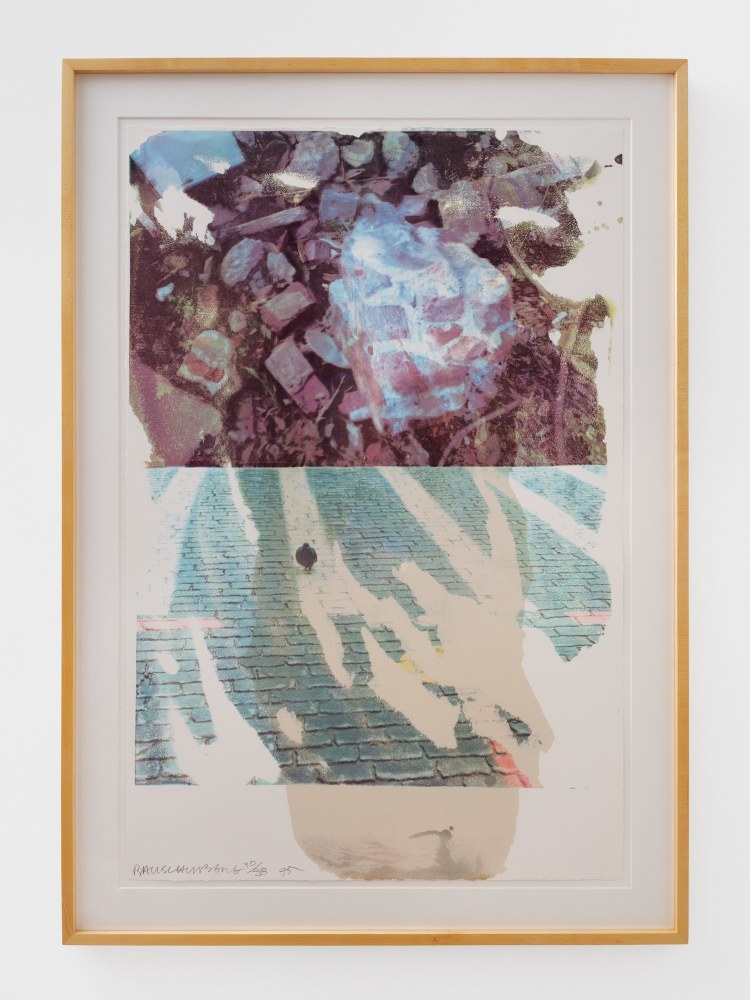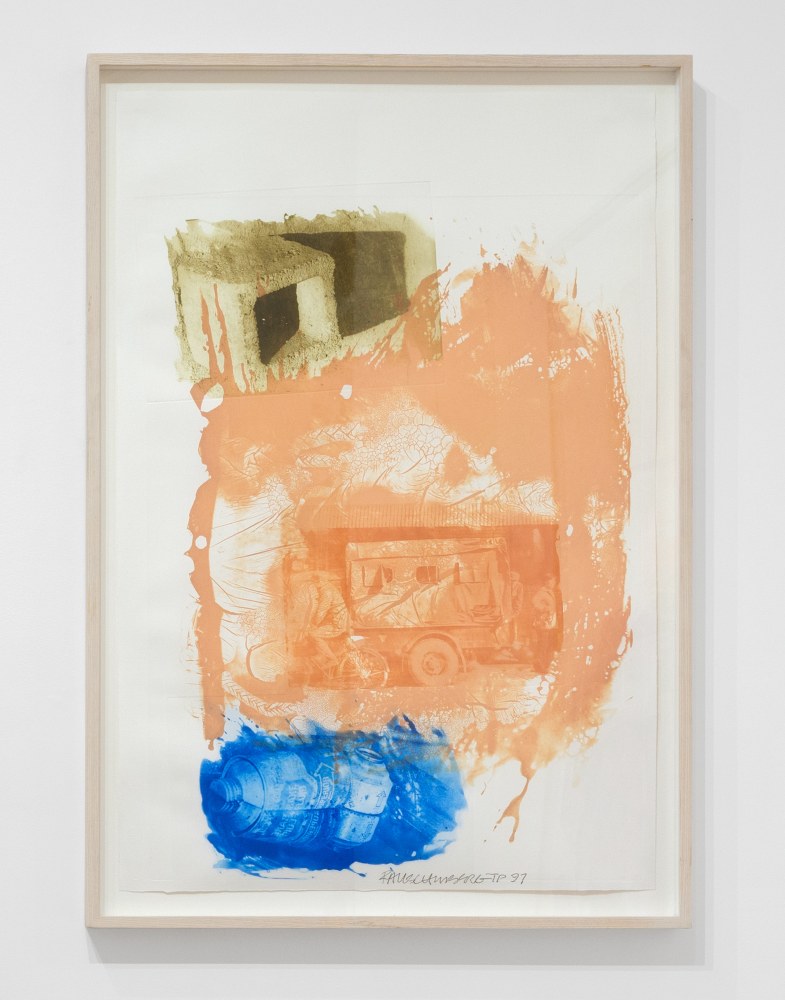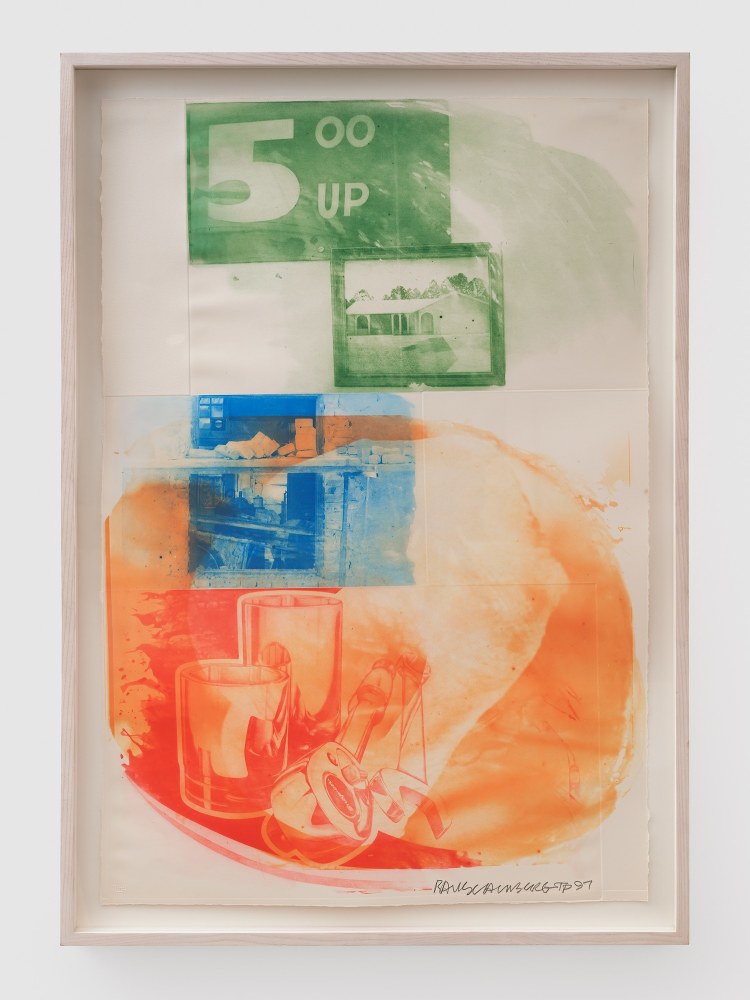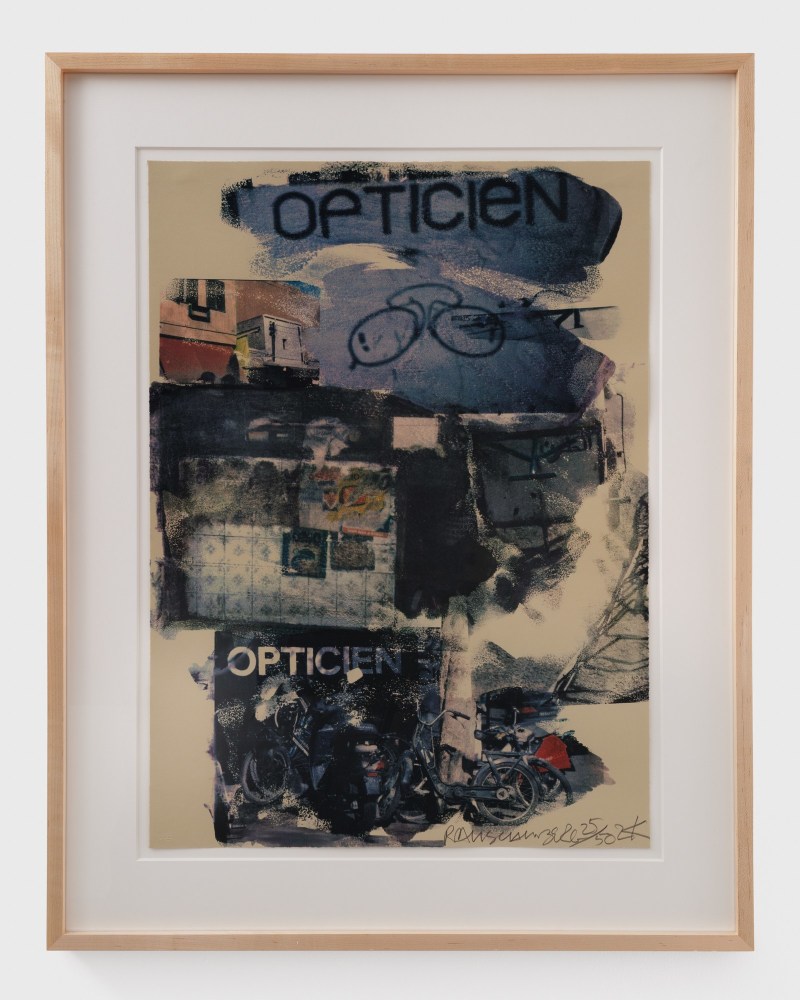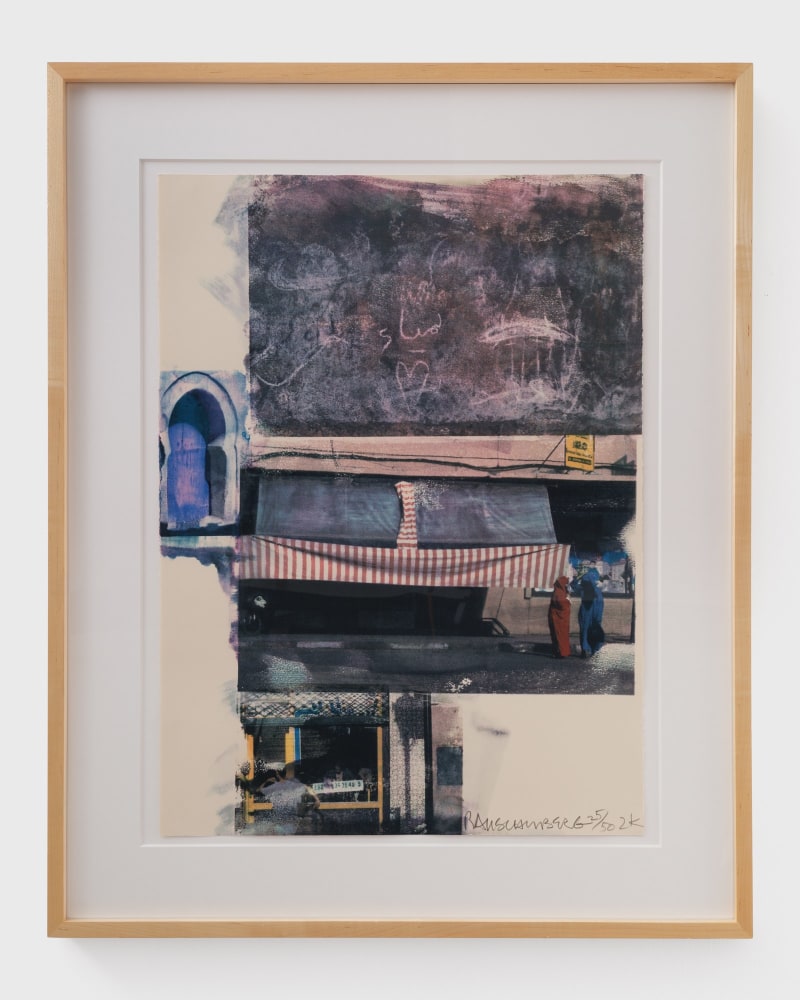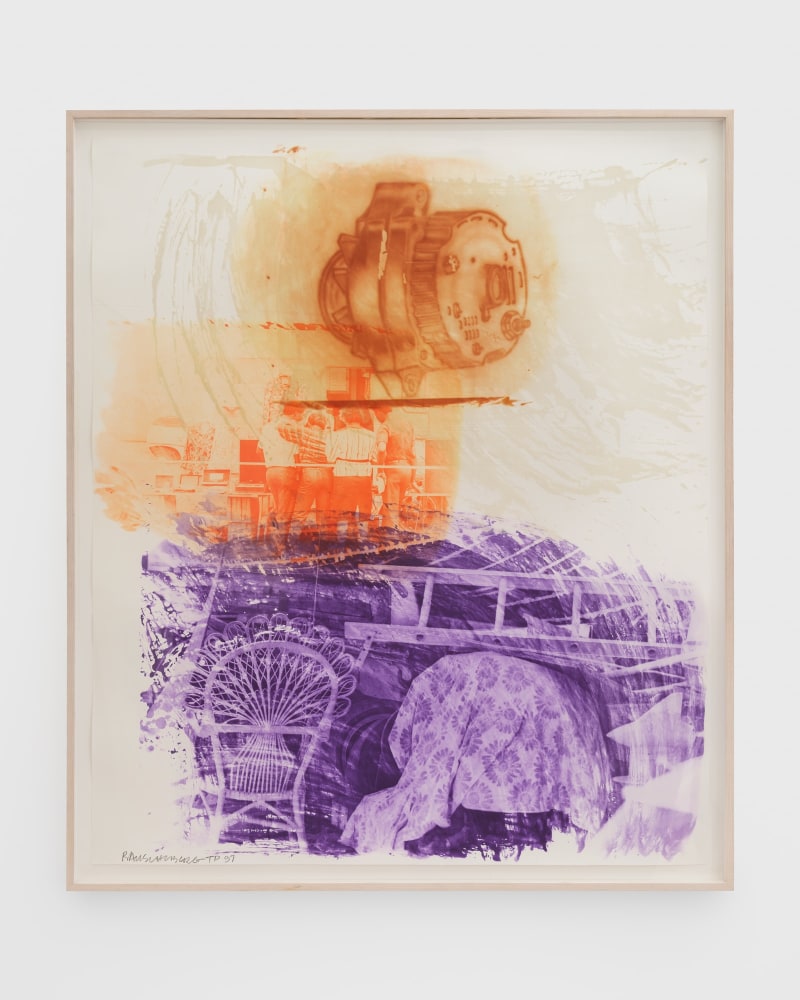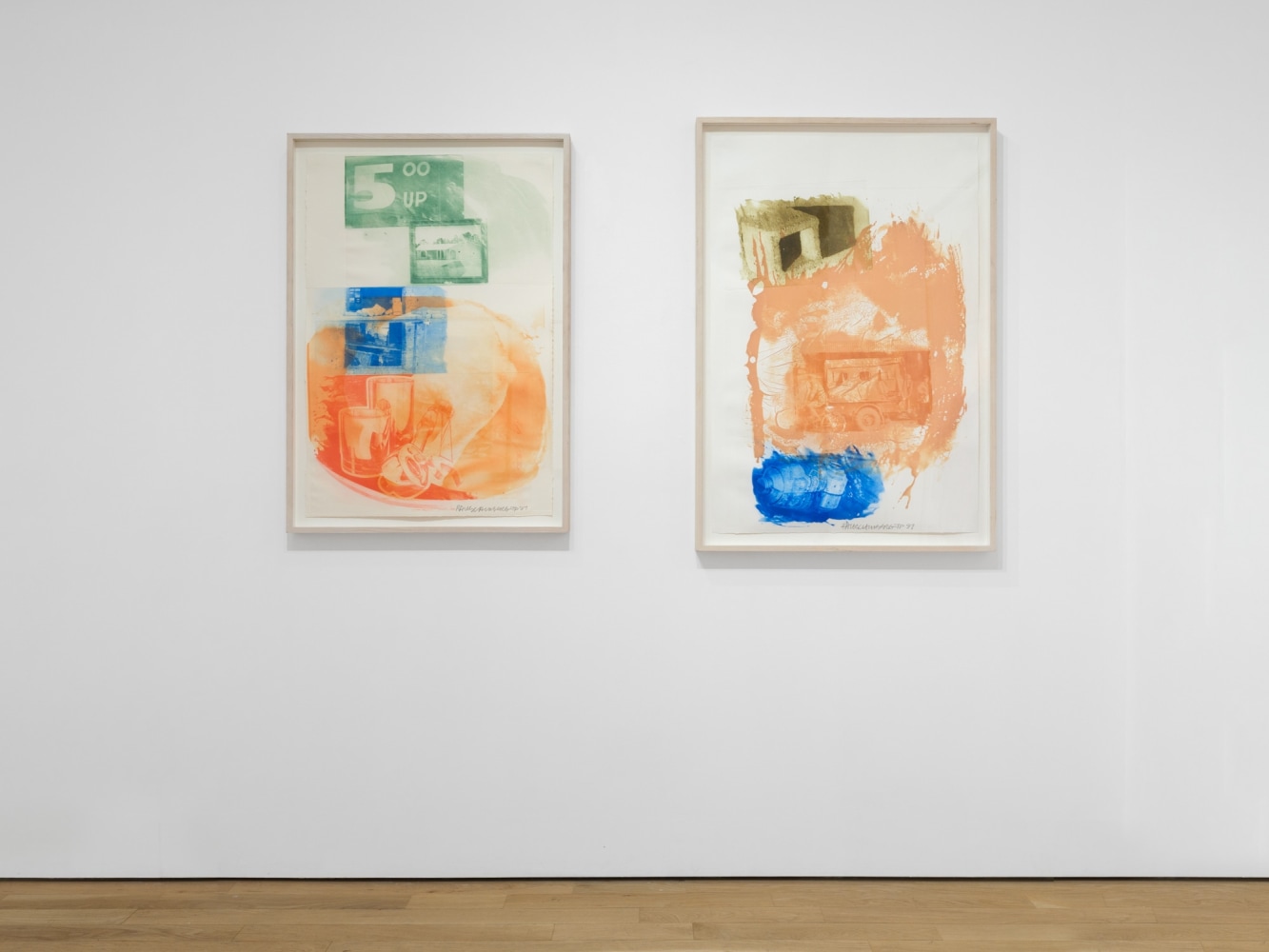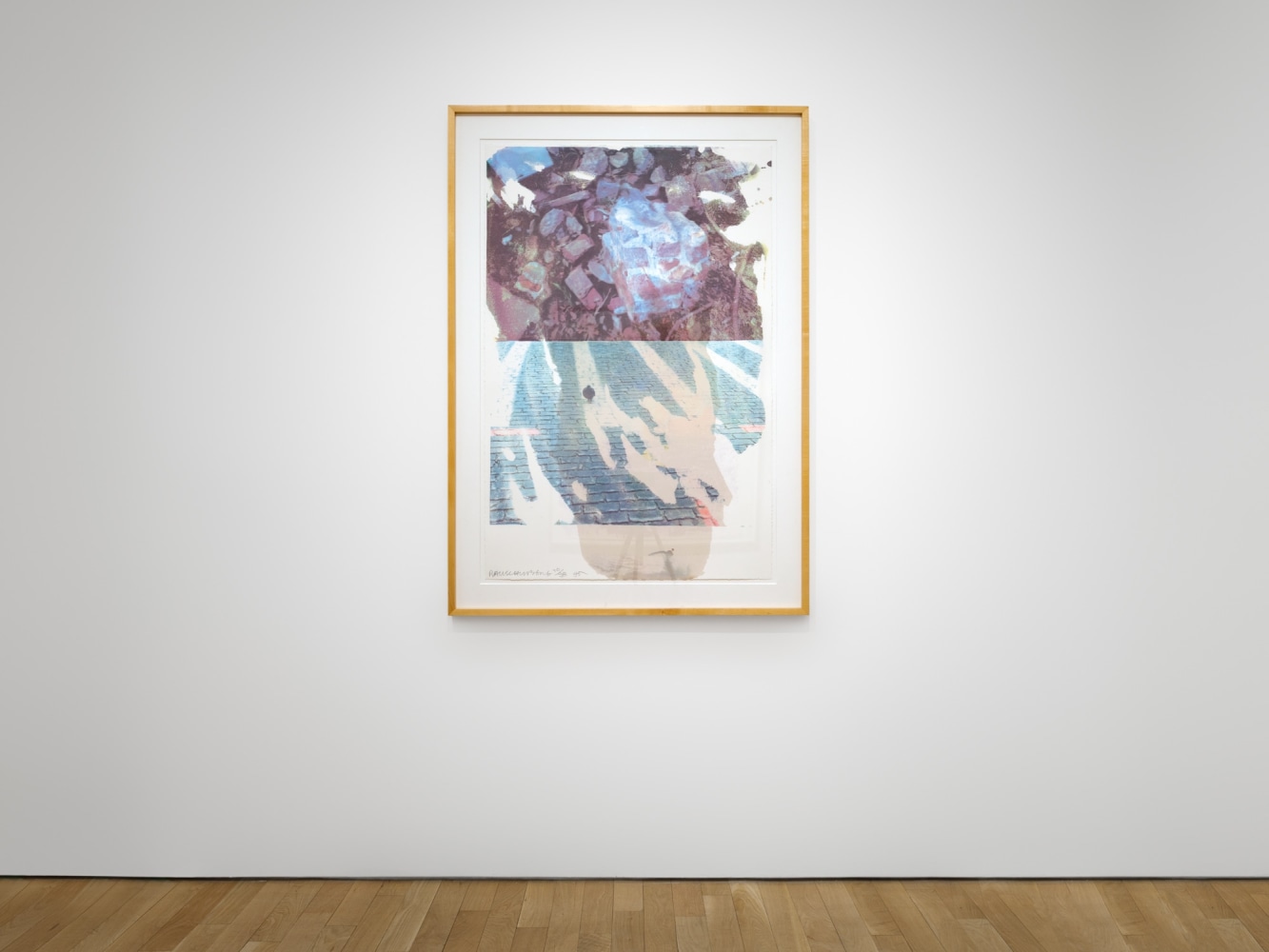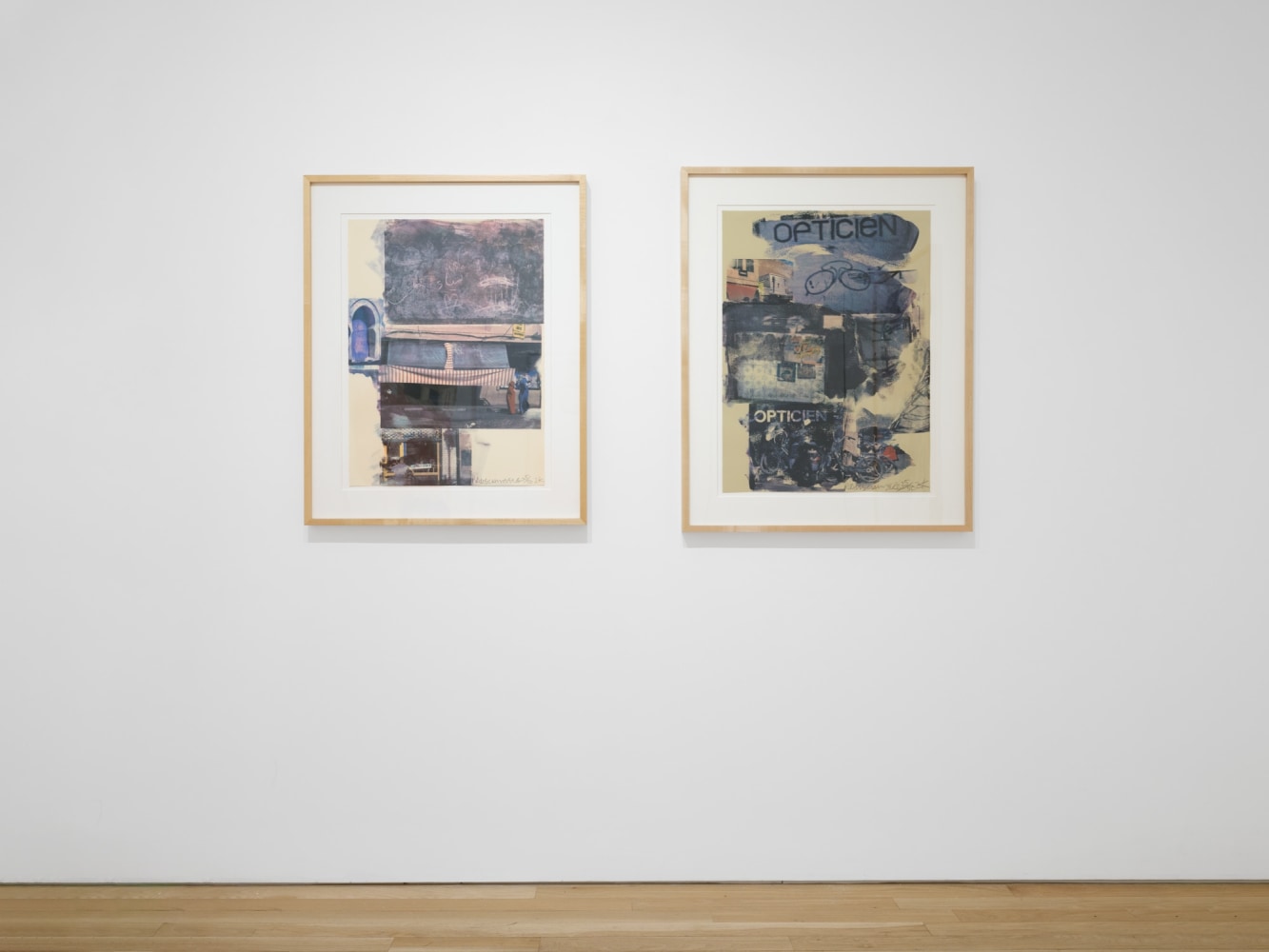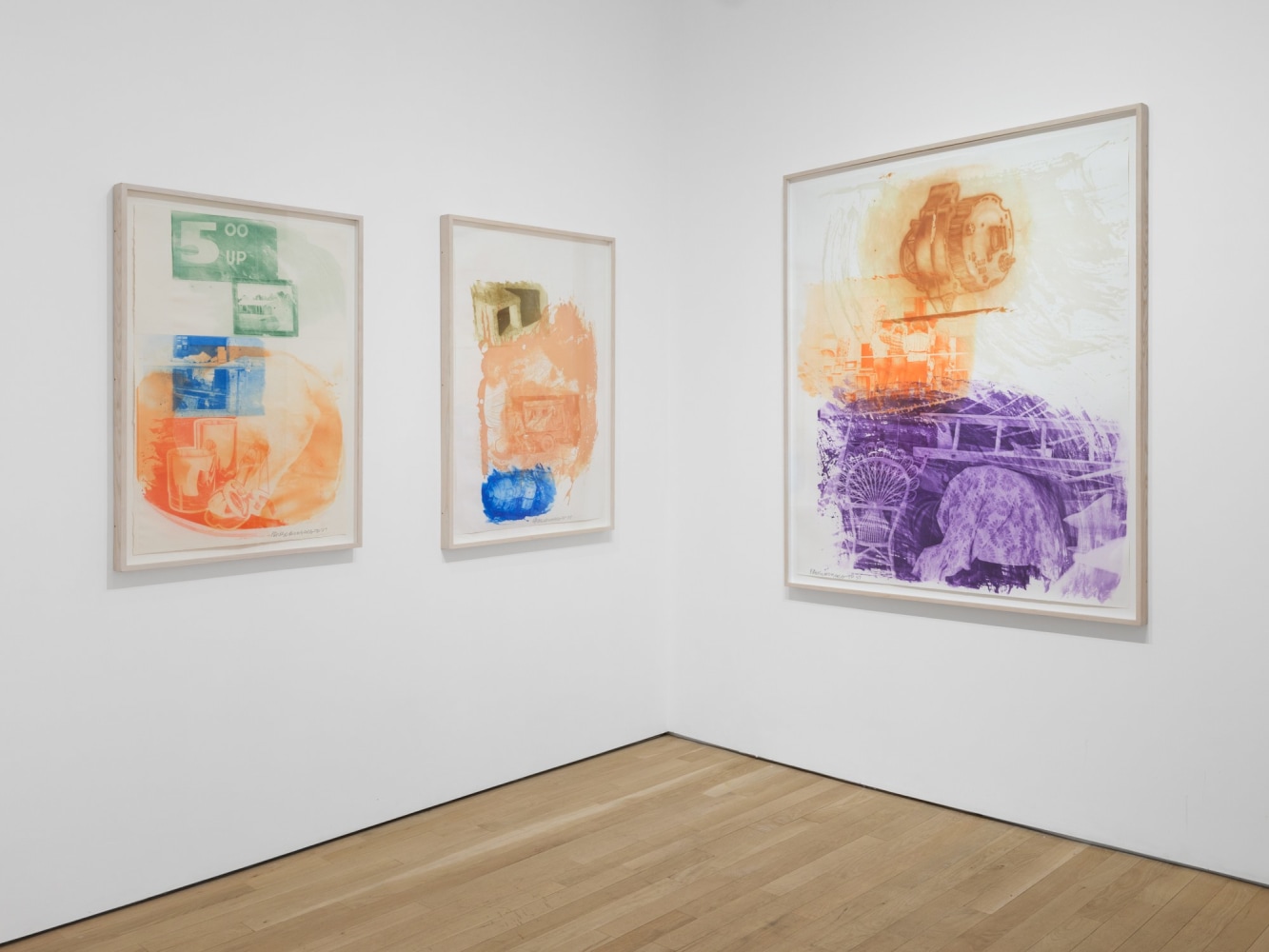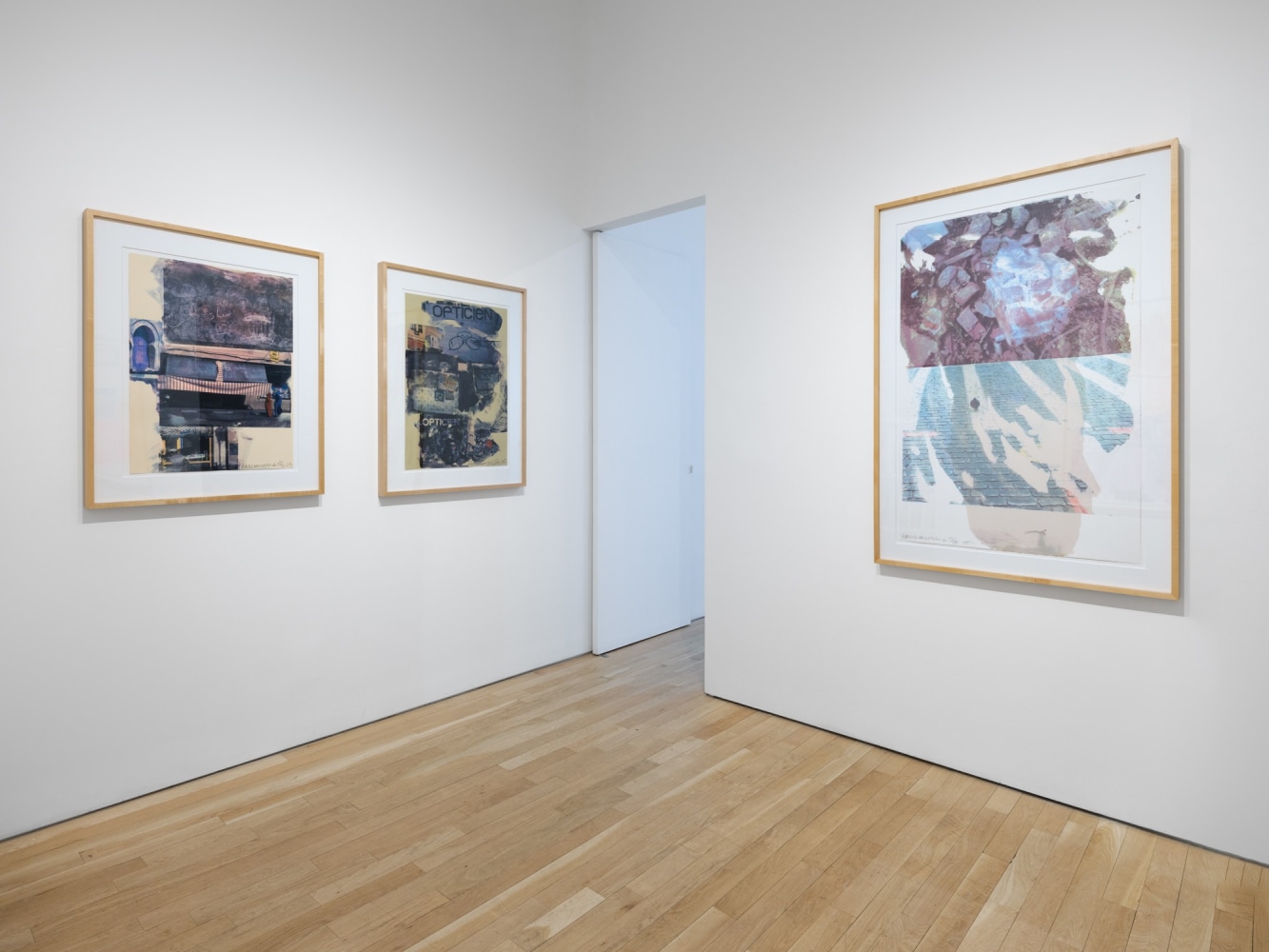Viewing Room
Robert Rauschenberg
Late Editions
March 8 - March 23, 2024
Bienvenu Steinberg & J is pleased to inaugurate Viewing Room, a new curatorial initiative presented alongside the gallery’s main program. The debut of Viewing Room features Robert Rauschenberg's Late Editions.
Each exhibition will spotlight a particular body of work by a single artist for a duration of two weeks. Viewing Room will showcase both historical presentations and contemporary artists, with invitations extended to outside institutions and curators for collaboration.
Robert Rauschenberg is widely regarded as one of the greatest American printmakers, although he came to printmaking reluctantly. When Tanya Grossman, the founder of Universal Limited Art Editions, approached him about producing lithographs in her studio, he replied that “the second half of the 20th century was no time to start writing on rocks.” But despite this initial resistance, Rauschenberg went on to create a monumental body of prints in a broad range of media. His continued explorations and innovations in print persisted throughout his career. The current presentation focuses on works produced between 1990 and 2000 and includes lithographs, screenprints, and intaglio examples.
In the catalogue for the artist’s 1997 retrospective at the Guggenheim Museum, Ruth Fine wrote:
"Both curiosity and generosity seem to be at the heart of Rauschenberg’s printmaking; curiosity in his sense of wonder, his wanting to know how materials and tools work, his 'what-would-happen-if' attitude; and generosity in his sense of accepting what appears to be virtually everything under the sun as, at least in principle, a potentially important and interesting subject for art."
Robert Rauschenberg (1925 - 2008) embarked on his artistic journey with studies at the Kansas City Art Institute and the Académie Julian in Paris before a pivotal period at Black Mountain College under Josef Albers' mentorship. This phase exposed him to diverse interdisciplinary influences, including peers like Cy Twombly, David Tudor, John Cage, and Merce Cunningham. Upon moving to New York City in 1949, Rauschenberg's collaboration with Jasper Johns ignited a groundbreaking exploration of new artistic territories, challenging the conventions of Abstract Expressionism by integrating everyday objects into his work and blurring boundaries between painting and sculpture. His ethos of working "in the gap between art and life" drove his relentless experimentation over six decades, solidifying his legacy as one of the foremost experimentalists of his time, reshaping artistic practice with a focus on everyday materials and imagery.
Bienvenu Steinberg & J are grateful to Gemini GEL at Joni Weyl and Universal Limited Art Editions, two of the most important publishers of Rauschenberg editions, for their cooperation.

